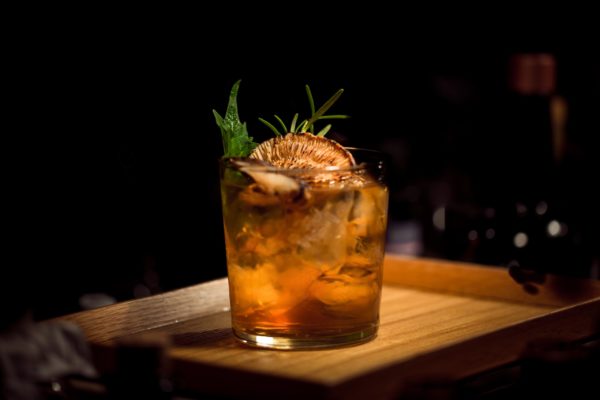Knowing the history behind a spirit can greatly enhance your drinking experience. Not only will you know where each note on the palate comes from, but you’ll also know what inspired the drink and what it took to achieve it.
More often than not, there is a culture attached to the spirit you’re drinking. With most popular spirits, there is a lineage and tradition tied directly to the product. From the drink’s birthplace to the family that created it, a spirit is so much more than just alcohol.
When it comes to rum, its history is dense. This distilled liquor is made by fermenting sugar cane molasses or sugar cane juice. It is known for its sweet, spicy flavor and robust texture.
From 2016-2019, global rum exports increased by over 26%. The rum market reached a value of nearly $1,800,000. A multitude of factors contributed to rum’s rise in popularity. This spirit had to overcome many political and social barriers to get to the place it is today.
At one point in time, rum was the new kid on the block, and it’s taken centuries for the spirit to receive its due recognition. There are few spirits as journeyed as this one. Find out all you need to know about the history of rum in this informative article. Keep reading below with Saucey.
The historical context that leads to the rise of rum
The main ingredient of rum, sugar cane, was first cultivated in 8,000 BC in New Guinea, an island in the western Pacific Ocean, located north of Australia.
Sugar cane was first fermented many centuries later in India around 350 BC. In these times, alcoholic fermented drinks were mainly used for medicinal purposes.
The development of rum was halted until the 1400s when European explorers began opening up trade routes throughout the world. Along their journeys, they discovered remote islands, creating opportunities for sugar cane to be grown. Sugar was highly sought after on the trade route, but it required immense manpower to grow. It also called for a steady supply of water.
By the mid-1600s, about 3,000 colonists were residing in New England. At first, these settlers struggled mightily. They severely underestimated the harsh weather of the land. As a result, they could not yield the wines, grains, and fruits they had planned on growing.
During this period, the homeland of Great Britain was experiencing its own problem: a beer shortage. Though not nearly as catastrophic as the colonists’ plight, beer was a cultural staple in England. As you can imagine, the English people were not happy about this.
And neither were the colonists. With no beer in England, there was no way they could get any beer imported to them.
As a result, the New England settlers started to attempt making alcohol themselves. They scrapped together any supplies they could possibly use: pumpkins, apples, twigs, and more.
The colonists were able to successfully concoct some drinks. But nothing could satisfy their true craving for beer.
The spread of rum
The American colonists soon realized that they would have to turn to alternative means for drinking. Eventually, they decided on making rum. Not only was it stronger than beer, but it was also cheaper.
Rum’s base ingredient of molasses was much cheaper than the brandy imported from England since its trade route was shorter. Molasses is also cheap because it’s essentially a useless by-product of sugar. There really is no purpose in keeping it unless you’re making rum or using it as a sweetener.
The growing popularity of rum allowed the colonists to stop relying on European imports. At first, they imported bottles of rum directly from Europe. However, by the late 1600s, they learned how to distill their own rum and imported molasses from the Caribbean.
The towns that were prevalent in rum production were Salem, Newport, Boston, and Medford. These regions became centerpieces of the budding rum industry. By the mid-1700s, there were over 100 distilleries built in just these four towns.
Gradually, these New Englanders were able to perfect their craft. They soon began selling bottles of rum by the thousands, as the spirit became one of the most affordable alcohols on the market. By this point, 80% of New England’s exports belonged to rum. Arguably, these colonists could have never even survived without the inception of their rum businesses.
Notably, at this time, slave traders were known for being fans of the drink. Some distilleries in New England even produced versions of rum with a higher alcohol content, specifically designed for slave traders. So, while this spirit is well-loved today, it does have a dark past.
How slavery contributed to rum’s growth
As mentioned before, two things are needed to grow sugar cane: water and manpower. Now, most islands are abundant in water. But it’s not so easy to build up a team of willing and dedicated growers.
Most sugar cane plantations in this time were worked by slaves. But while the demand for rum began to explode, the supply of slaves was limited.
When colonists began to ramp up sugar cane production on islands like the Azores and Canary Islands, they realized they’d need to bring in more slaves.
The issue was that they had little to offer. They had no gold. They had little to no livestock left. And virtually no crops. But they had liquor.
African slave traders were notorious for accepting alcohol as a form of payment. And since rum could only be grown in certain regions of the world, it was considered a valuable commodity.
Brandy, on the other hand, had a much lower volume and a stronger kick. By supplying these slave traders with huge amounts of the spirit, the colonists acquired enough slaves to work their plantations.
It is a sad truth, but the rum industry was made possible almost entirely by slavery. Without these huge imports of slaves to these foreign lands, farmers could never find enough manpower to grow their sugar cane.
Slaves labored over every step of the production process. They planted the sugarcane, cultivated it, fertilized it, cut the stalks, and transported it to the mill.
When it was pressed, and the juice was extracted, slaves strained the juice. They poured it in boiling pots until the sugar was crystallized. They were the ones to extract the molasses. Enslaved people may even be responsible for developing the process of making rum.
How rum contributed to a revolution
The colonists’ success was greatly hurt when England attempted to enforce an import tax on molasses from French colonized islands. Since this was the main place that they imported their molasses from, they were outraged.
Eventually, this tension led to the passing of the Sugar Act in 1764, levying a tax on molasses. And thus, the famous saying, “No taxation without representation,” was born.
One Boston Tea Party later, and after a few more incidents between the two sides, the first shots of the Revolutionary War were fired at Lexington and Concord.
Most Americans are aware of how this dispute started between the colonists and Great Britain. But few people truly understand just how important the rum business was in this situation.
Yes, the American people were willing to die for their freedom. But they were also willing to die for their rum.
The takeaway
Rum has had a littered history. It’s been connected to the biggest slave trade in the world. It started a massive war almost single-handedly. And yet, somehow, it has lived to tell the tale.
In the early 19th century, there was a time when the United States government was encouraging the production of whiskey over rum. Systematically, rum producers were at a disadvantage for years, being forced to charge up to 300 percent higher than whiskey prices.
Despite these boundaries, the drink has lasted. Even through prohibition, the popularity of this drink did not die down. In fact, it was one of the most commonly bootlegged alcohols on the black market during that time.
This drink has come a long way, and despite its somewhat dark past, you can’t argue its place as a historically important spirit.
If you’re looking for quality rum, check out Saucey. As America’s premier alcohol delivery service, we offer various rums, including white rum, dark rum, spiced rum, flavored rum, and aged rum. We also deliver other spirits, as well as beers, wines, and more.




